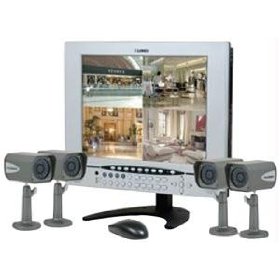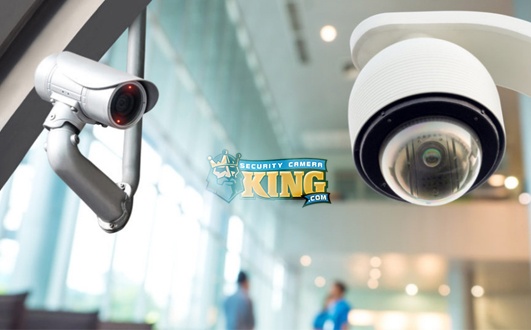 A digital video camera security system that does not use video transmission cables is normally referred to as security camera system wireless or a wireless security camera system. These systems offer the greatest versatility in camera installation since it is unnecessary to run an RG-59 coaxial cable from each camera to the Digital Video Recorder or DVR.
A digital video camera security system that does not use video transmission cables is normally referred to as security camera system wireless or a wireless security camera system. These systems offer the greatest versatility in camera installation since it is unnecessary to run an RG-59 coaxial cable from each camera to the Digital Video Recorder or DVR.
A security camera system wireless sends it video image data via radio waves that travel through the air, rather than by electrical impulses that travel along a cable. Most security camera system wireless send their data using 2.4 or 5.8 Ghz band technology, the same sort of technology used by land line based wireless telephones. Not all cameras utilize this technology, some use the 900 Hz or other signal frequency technology while wireless IP (Internet Protocol) ready cameras often use 802.11 WiFi technology.
The wireless camera may not be truly wireless, as a small low-voltage Direct Current (DC) power supply line may be needed to power the camera. This normally comes from a power distribution center that can transform household current into the type needed for several cameras and other equipment on the system. Cameras may also utilize individual plug-in adaptors that plug into a normal outlet and transform the electricity for use by a camera or cameras.
A security camera system wireless is truly wireless when the camera not only transmits its video data without the use of wires, but also when it uses rechargeable battery packs instead of a power supply line. The greatest benefit of these wireless cameras is the incredible versatility for use, including covert surveillance by using hidden or disguised cameras. Of course, the downside to using a rechargeable battery pack is that the power supply of the pack is finite and must be removed and recharged when the there is no longer enough voltage to support the camera.
Wireless cameras have their own on board transmitter and antenna. The camera functions like any other “non-wireless” camera however the on-board circuitry changes the video image data so that it may be transmitted via radio waves. The video data is transmitted to a corresponding wireless receiver, which is normally positioned in proximity to the DVR and is connected to the DVR by cable.
Each camera in a system uses a different frequency or channel so as not to interfere with multiple camera transmissions. Likewise the receivers normally have a selection of frequencies that can be chosen to match the frequency of each camera input (although admittedly confusing, often called channels as well). Receivers may be able to accept one, two, or four different camera signals. Some receivers can actually support 8 different camera signals, although generally multiple receivers with different frequencies selected are used for more than four camera inputs.
Wireless cameras have a range of operation. For most non-WiFi security camera systems wireless, i.e. those that use 2.4 or 5.8 GHz technology, the range is stated in the camera’s specifications as LOS or Line Of Sight. This means a camera with a 400 foot LOS range can operate properly with a distance of 400 feet between the camera and the receiver, provided their is a straight line of sight between the two i.e. without any objects blocking the path. When a camera lists a LOS range, it doesn’t necessarily mean that it won’t work properly if there is something obstructing the path between the camera and receiver. However, the range is normally reduced. Depending on the material or materials that are blocking the LOS (for example walls, windows, buildings, trees, etc.) the range is normally just reduced. Nonetheless, it is important to keep the LOS range in mind when purchasing a security camera system wireless.
IP ready wireless cameras contain their own transmitter technology, web server technology, and antenna. These cameras work a little differently in that they do not necessarily transmit their signals to a security system receiver, but often transmit their signals (already prepared for distribution over the internet) to a wireless modem or router. In these cases the range of operation is dependent on both the specifications of the camera and the wireless router.
A security camera system wireless offers the versatility of “almost anywhere camera placement” with the ease of camera installation. In addition these systems are reasonably priced. If you are interested in purchasing one of these systems talk to one our security experts for more information.











